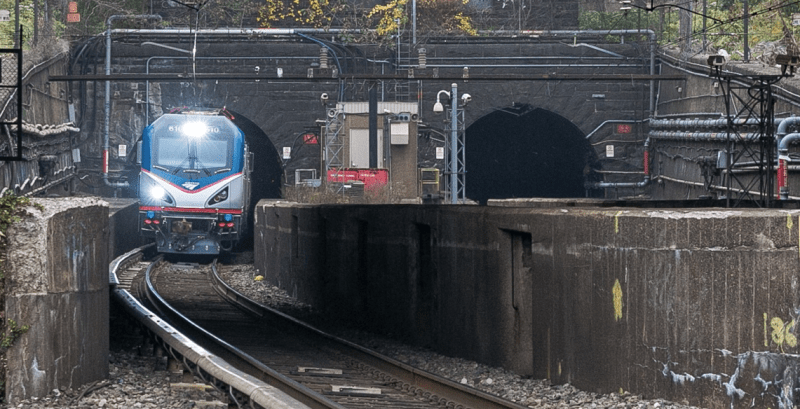The federal government's failure to fund a new Hudson River tunnel will blow a $16-billion hole in the regional economy because train capacity will be cut by 75 percent during four years of repairs to the existing 110-year-old tubes, a new report shows.
The Regional Plan Association analysis takes into account massive hits if the so-called Gateway Project is not built — millions of dollars in productivity lost to longer commutes on Amtrak and NJ Transit, an estimated $407 million lost because there will be more automobile crashes, $1 billion lost to truck delays, and nearly $3 billion lost in the form of federal and state tax revenue. The resulting disaster would also cause a $22-billion drop in real estate values, according to the report, which was issued with the engineering and design firm Arup.
“Every day that we aren’t building the Gateway project, we’re one day closer to real economic and social calamity that would be felt across the tri-state area and beyond,” said Tom Wright, the president of the Regional Plan Association. “From job availability to housing prices, the price of household goods, and even the cost of air travel, every sector of our economy would feel the effects of a partial shutdown of the trans-Hudson tunnel. ... It is a slow-moving, predictable crisis which we have the capacity to prevent.”
Amtrak is on the hook for rehabilitating the 110-year-old two-track rail line, which was damaged by superstorm Sandy in 2012. But the railroad is counting on the feds to chip in half the cost in order to first build a new tunnel that would ultimately double its capacity. A new tunnel is crucial, the RPA says, because without it, one of the two existing tunnels would have to be shut down for repairs, which would reduce the capacity from 24 trains per hour to just six, according to the report.
In 2015, Gov. Cuomo and then-New Jersey Gov. Chris Christie offered to pick up half the tab for the estimated $13-billion tunnel as part of the Gateway Project if the federal government funded the rest, but that cash now remains in limbo under President Trump.
The Regional Plan Association has previously said that multiple tunnels are needed in the long term. But the Gateway Project, originally known as "Access to the Region's Core," is the most pressing. The original project was begun in 2009, but was terminated by Christie, who didn't want to pay for it. That tunnel would have been completed in 2018.
The new tunnel is necessary to increase capacity to 48 trains per hour — and allow for high-speed rail service. It has no completion date at this time.
An earlier version of the story missed calculated one of the figures related to train capacity. Streetsblog regrets the mathematical error.






